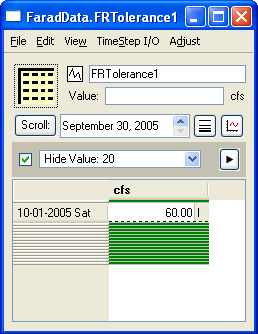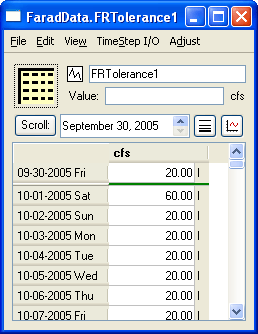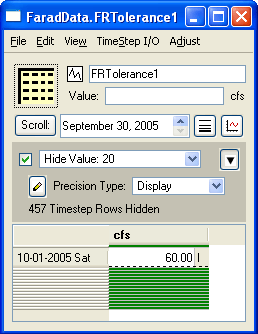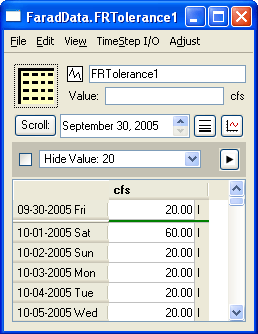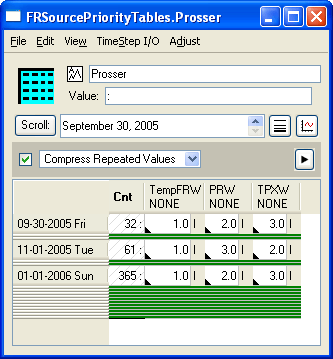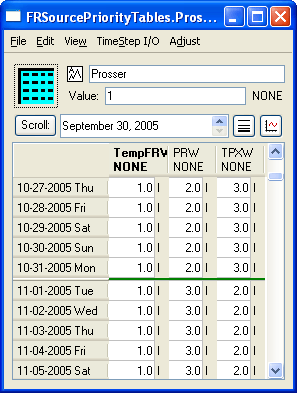RiverWare Series Display Compression
This wepage illustates examples from Shane Coors (USBR) for potential
uses of Series Display Compression and images of possible Slot Dialog configurations
using Series Display Compression in RiverWare 5.0. [September / October 2007].
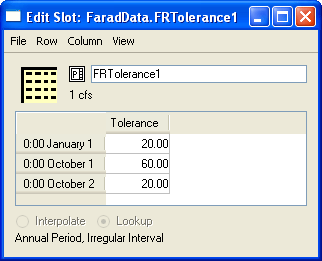 |
(1) Single Series slot with high redundancy (no NaNs)
Example Slot: FaradData.FRTolerance
Explanation: This slot is used to specify the tolerance
in the flow at the Farad Gage that is identified as meeting the Floriston
Rate. For most days it is set to 20cfs but user/operator needs ability to
relax the tolerance on a daily basis if conditions warrant. There aren’t
very many exceptions to the standard 20cfs; maybe only a handful per year
and usually for only a day or two at a time. |
Suggested SeriesSlot alternative with new RiverWare (5.0 Development) Series
Display Compression Feature [10-16-2007]:
RiverWare Series Display
Compression
 |
(2) Single Series Slot with mostly NaN
Example Slot: Tahoe Data.UserInputRelease
Explanation: This slot is used to specify an override release
from Tahoe. The model will assign a release according logic specified in the
ruleset. However, there are occasions when a different release needs to be
set by the user for any of a wide-variety of reasons. The release-setting
logic in the ruleset looks for a value in this slot, if there isn’t
one (NaN) then its proceeds with the logic, if there is a value, it sets the
release to this value. This slot has mostly NaN’s except when the operator
has reason to override the standard release.
Alternative
with new RiverWare (5.0 Dev) Series Display Compression Feature [10-16-2007]:
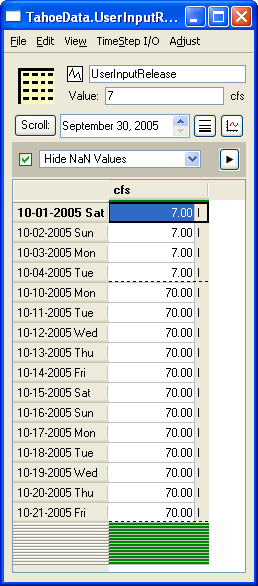
|
RiverWare Series Display
Compression
|
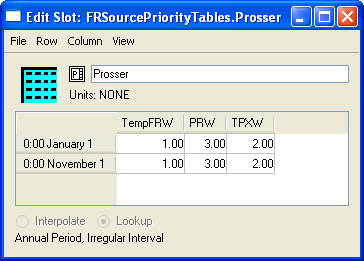
Note: I believe there is a mistake in this screenshot. The two rows are
intended to be different, e.g. ...
| January 1: |
1.0 |
2.0 |
3.0 |
| November 1: |
1.0 |
3.0 |
2.0 |
|
(3a) Multiple Series Slots all inter-related (Ag-series
candidate?)
Example A: Reservoir Priority Tables
Example Slot: FRSourcePriorityTables:Prosser
Explanation: This example is a periodic slot, but as we
discussed, we see it better as 3 (in this case) series slots, one for each
account. These 3 slots function as a unit describing in which order water
will be charged to accounts on Prosser for meeting the FR demand. All of the
“Priority Tables” objects in that region of the model are examples
like this. The priority order will change only a couple times per year and
in many cases will not change at all. So it would be nice to just see the
timesteps where there was a priority change between 2 or more of the accounts.
There would never be any NaN’s in any of these slots. |
Alternative with
new RiverWare (5.0 Dev) Series Display Compression Feature [10-16-2007]:
RiverWare Series Display
Compression
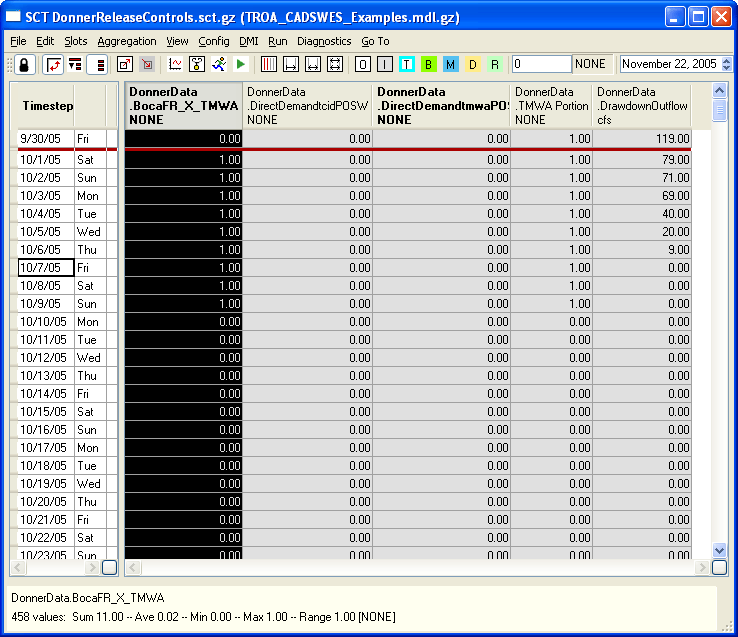
Alternative with
new RiverWare (5.0 Dev) Series Display Compression Feature [10-16-2007]:
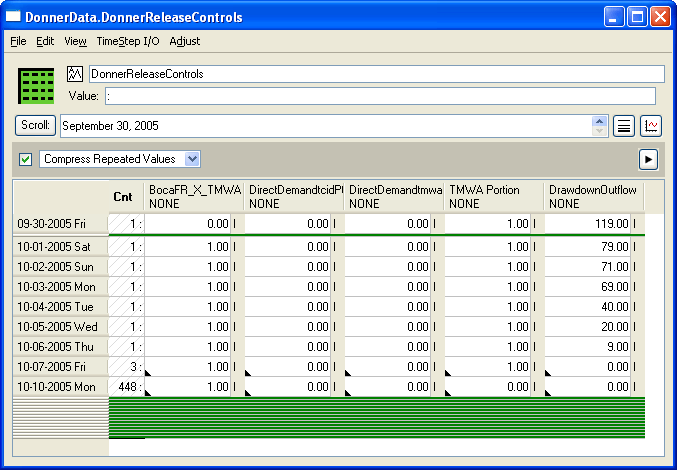
(3b) Multiple Series Slots all inter-related
Example B: Donner Release Controls
Example Slots: All on DonnerData.BocaFR_X_TMWA, DirectDemandtcidPOSW,
DirectDemandtmwaPOSW, TMWAPortion, DrawdownOutflow. SCT including
all of these slots is probably the most useful way to visualize what is happening
Explanation: These slots collectively control how the water
is released from Donner Lake primarily during drawdown season. Two parties co-own
the water in this lake and so the proportions of the release belonging to each
party need to be defined as well as whether or not the water can go toward meeting
the Floriston Rate or not. The SCT is helpful because all 5 slots can be viewed
on a common time scale, but there is substantial redundancy that would be nice
to be able to remove.

